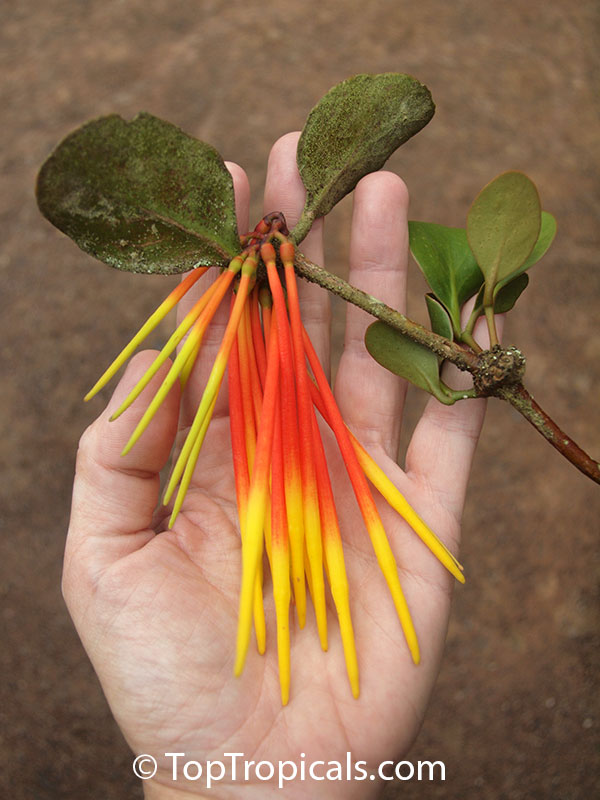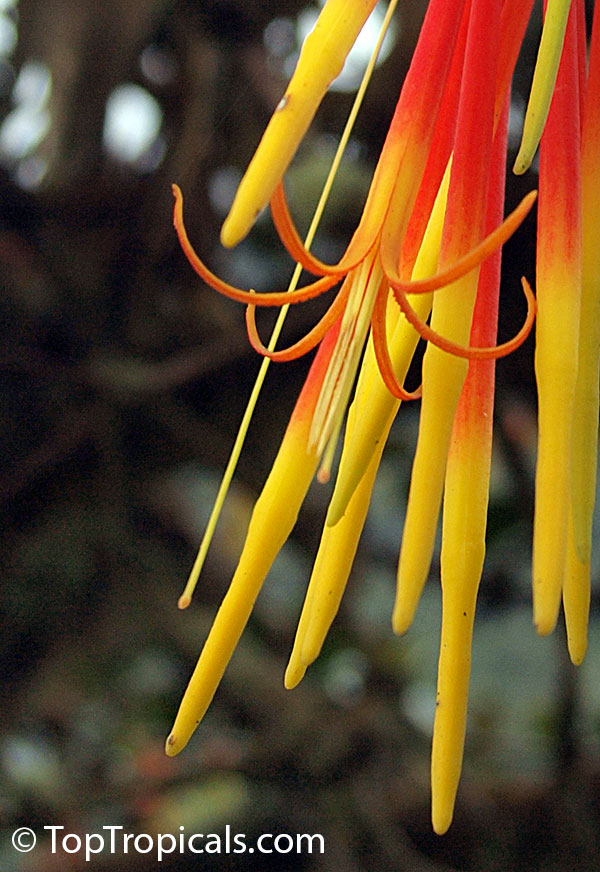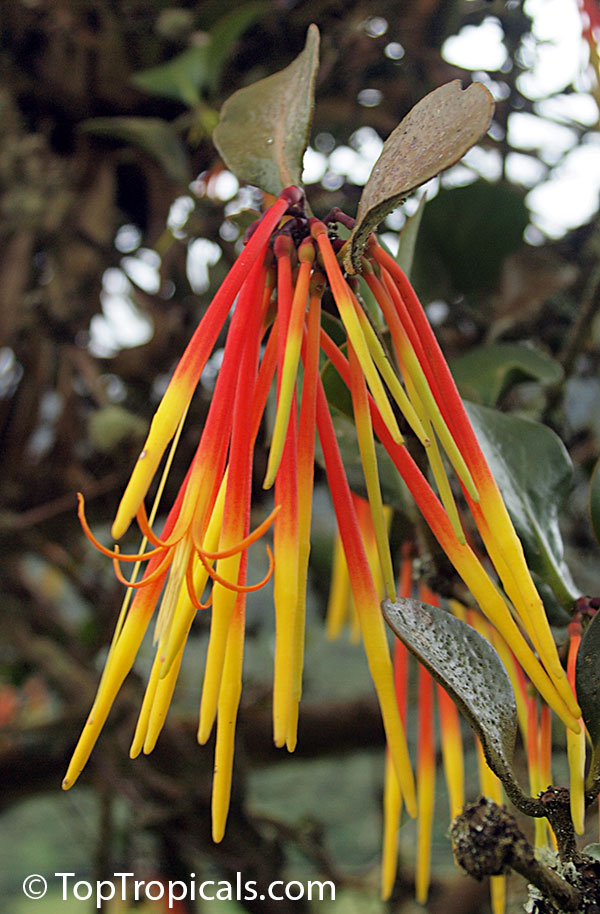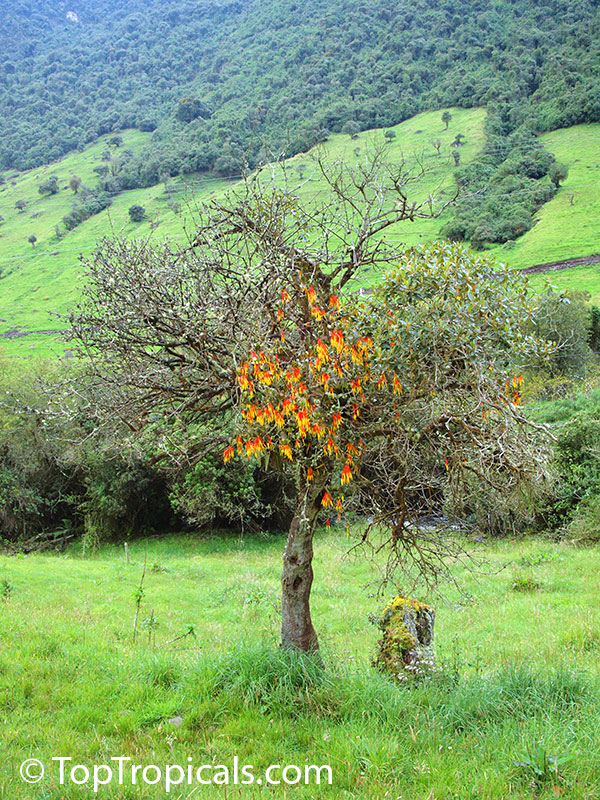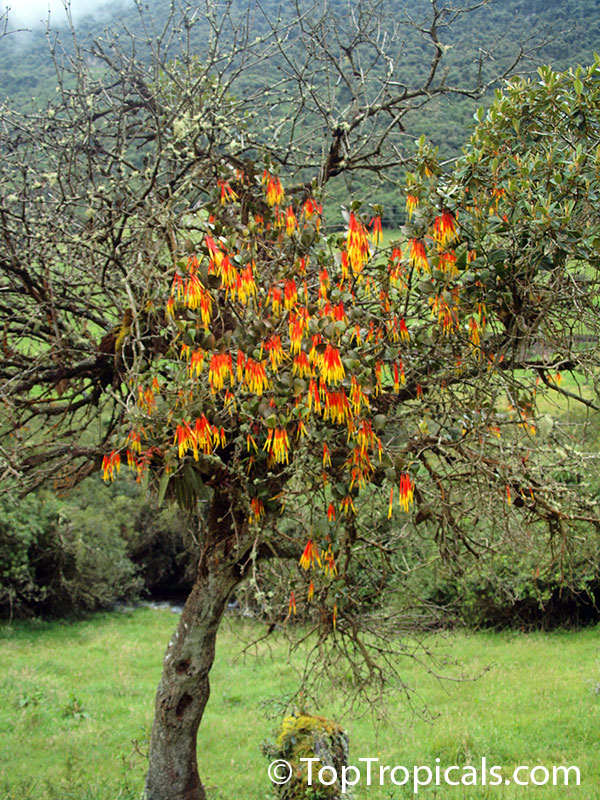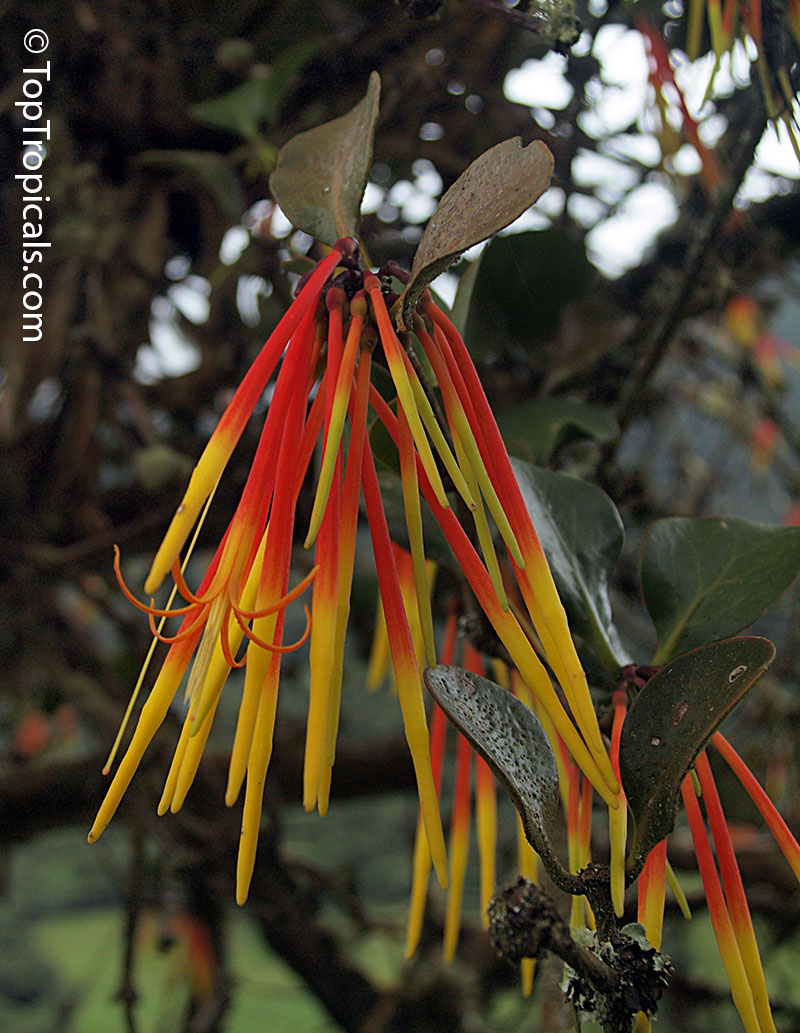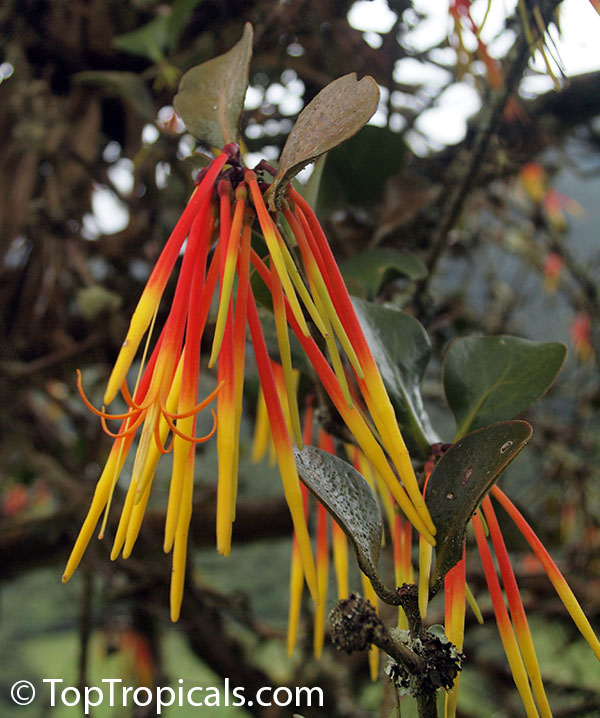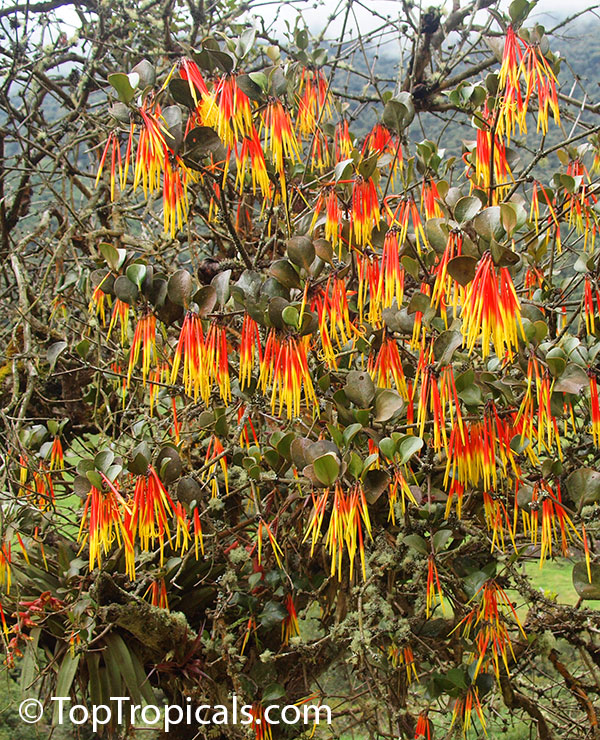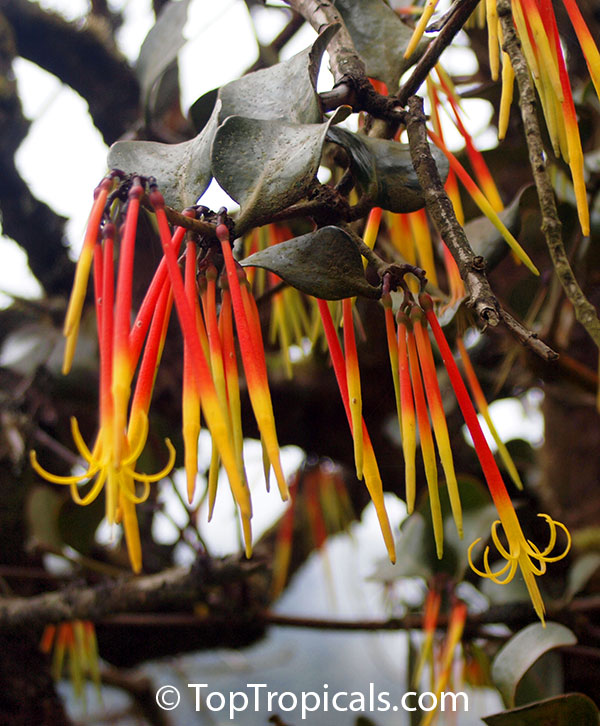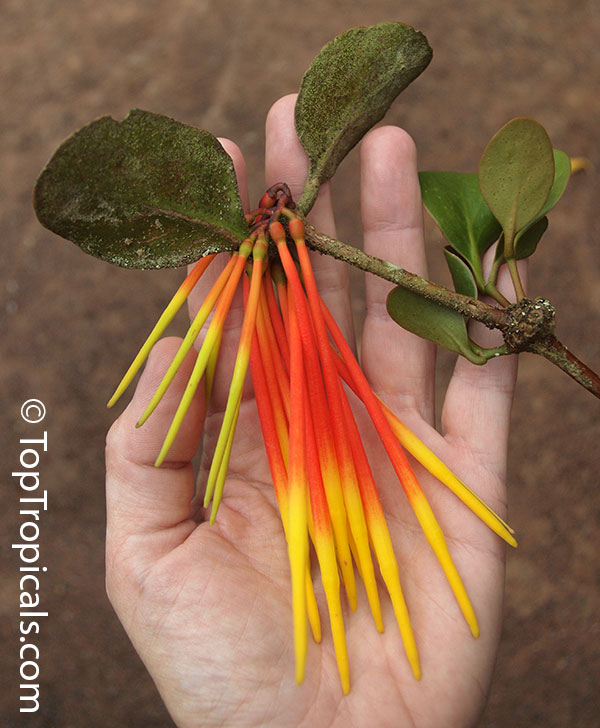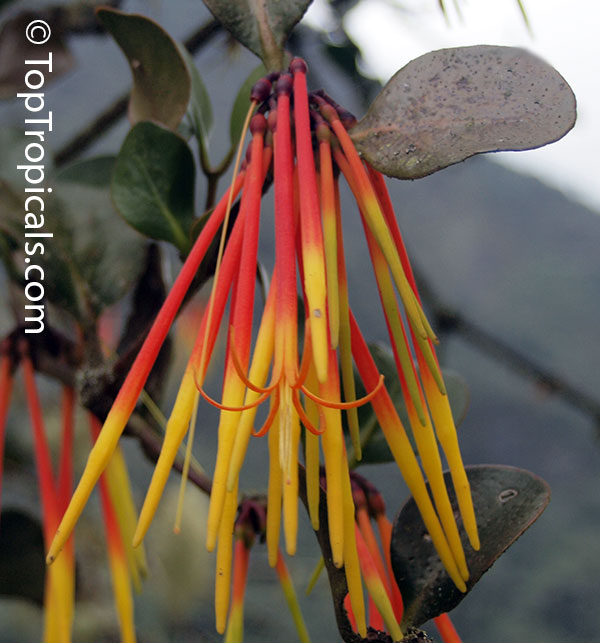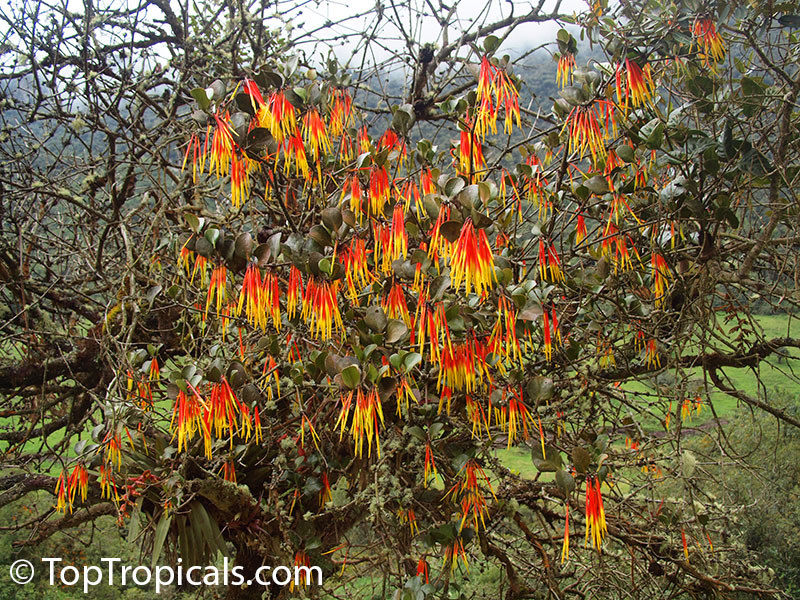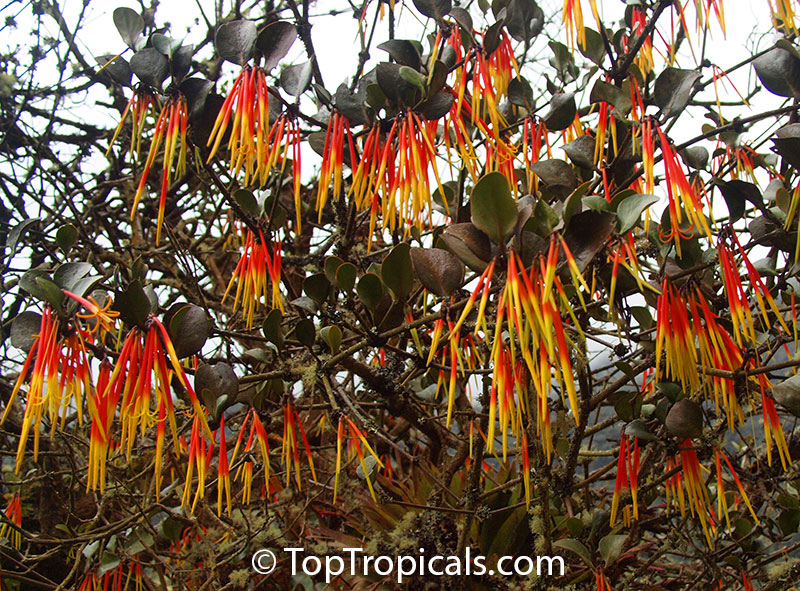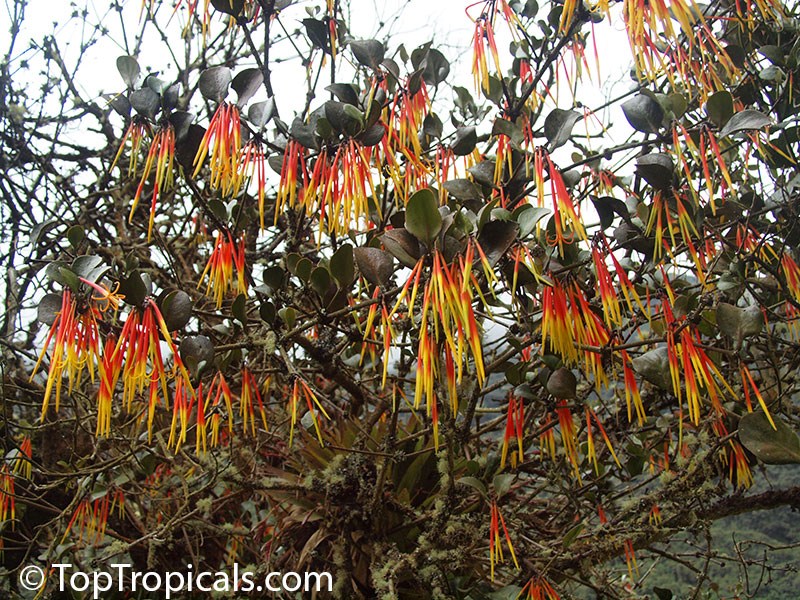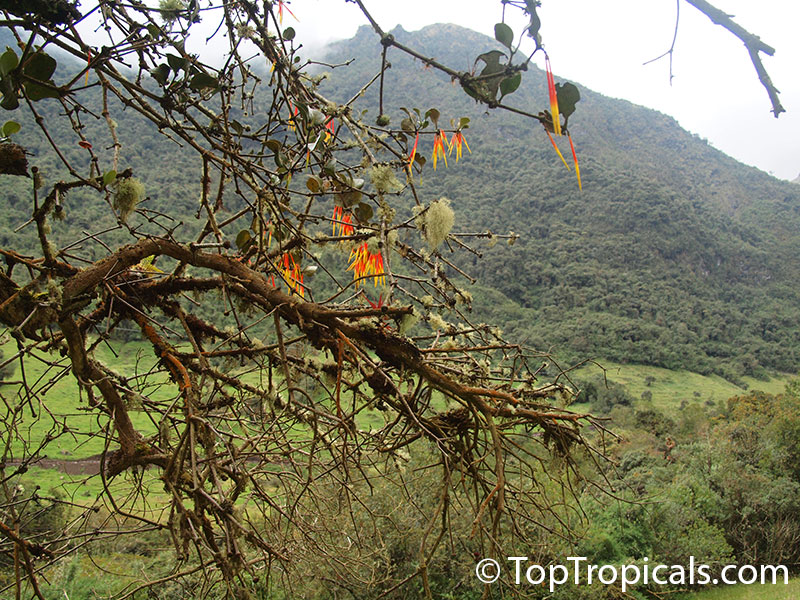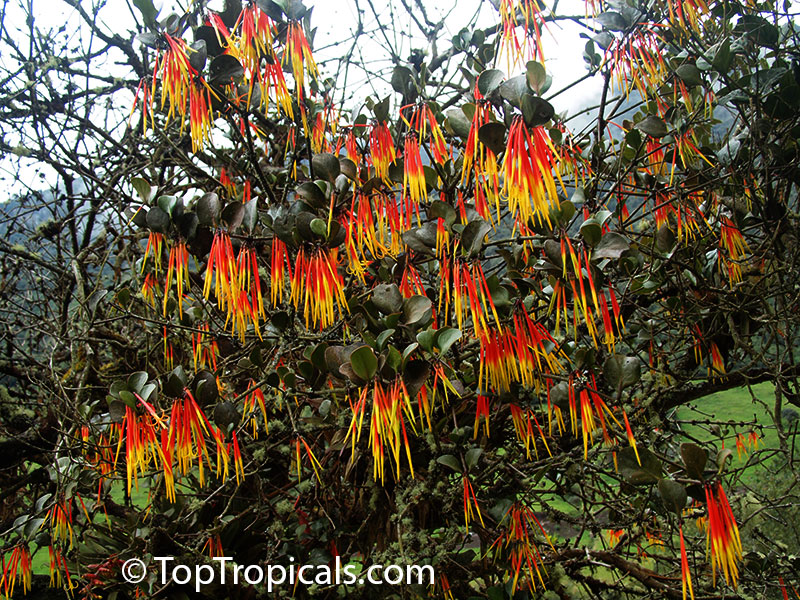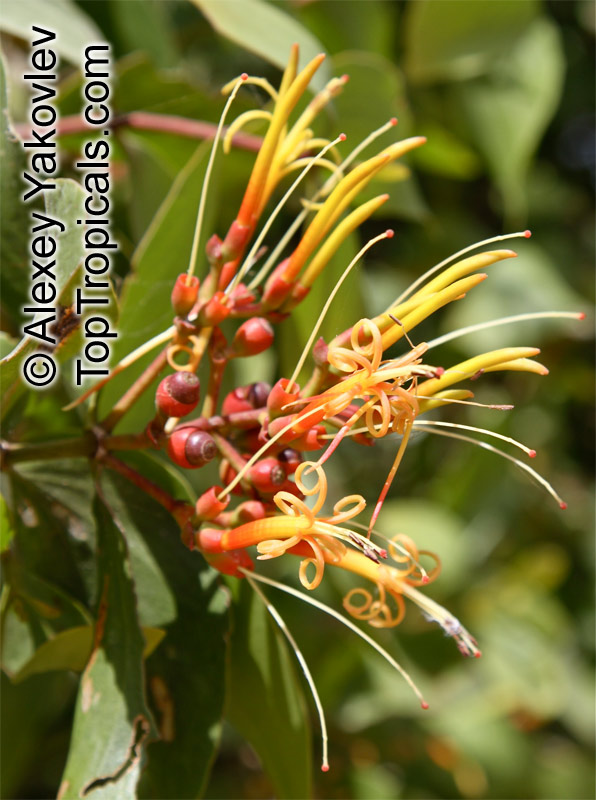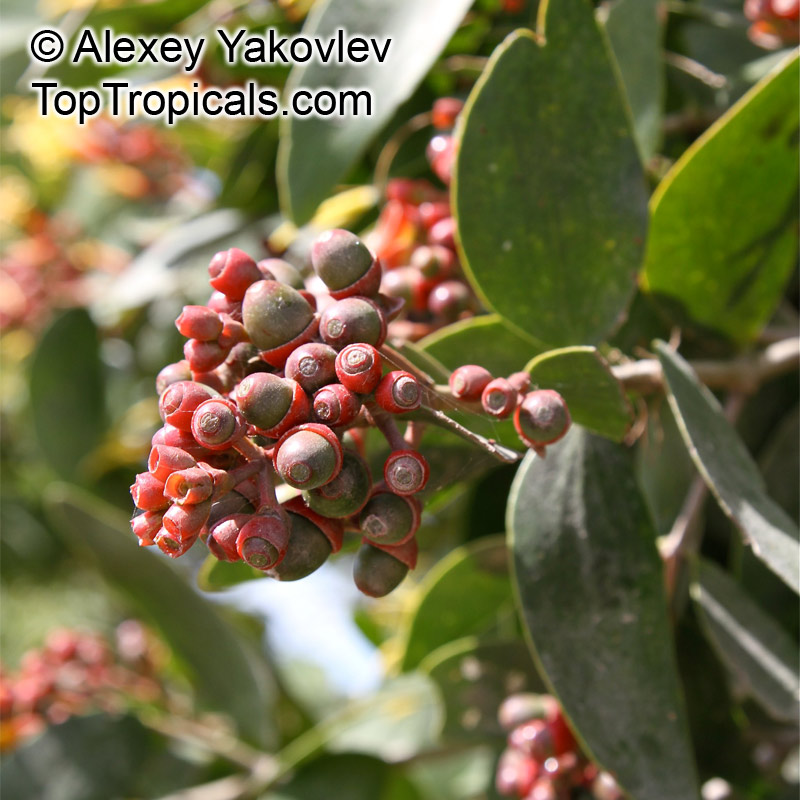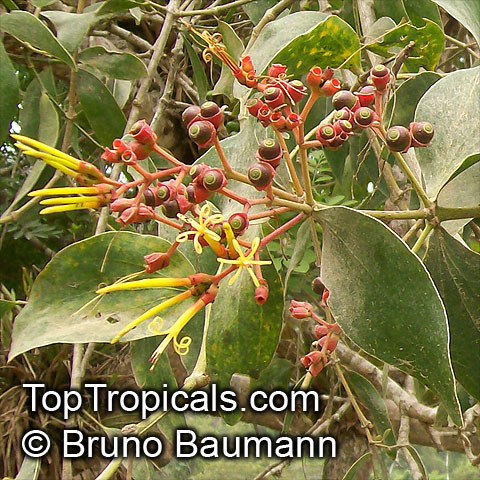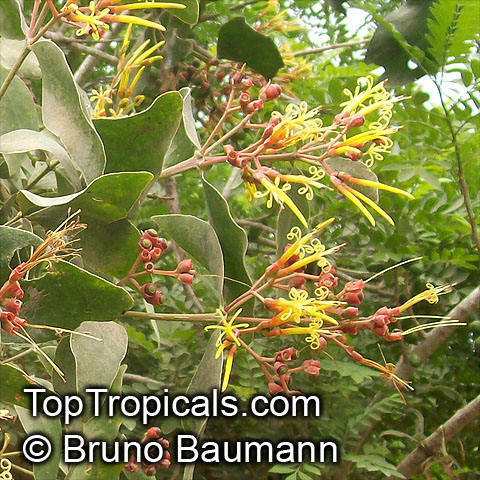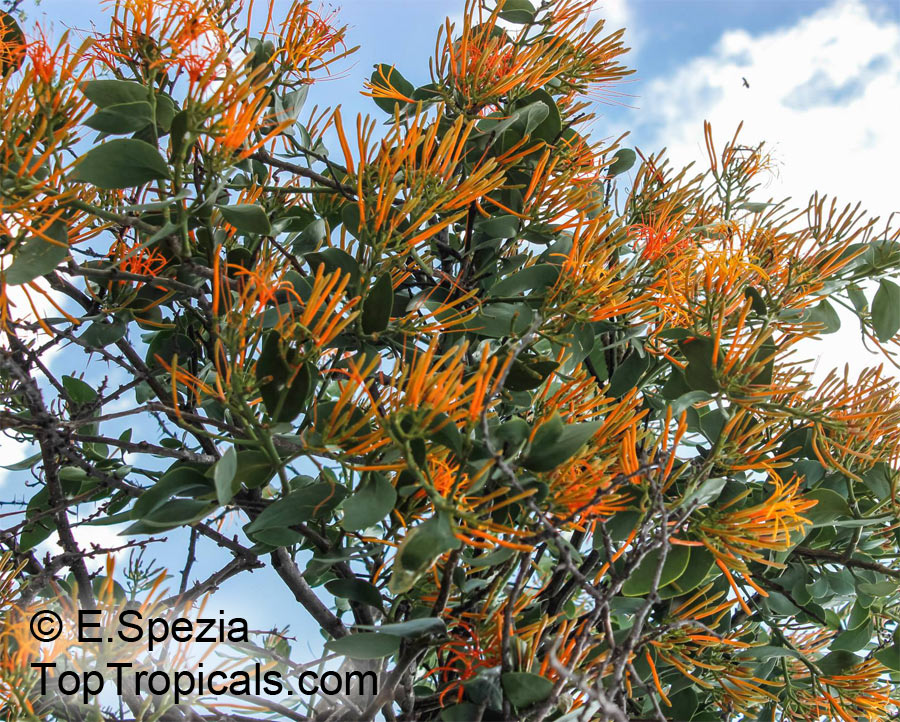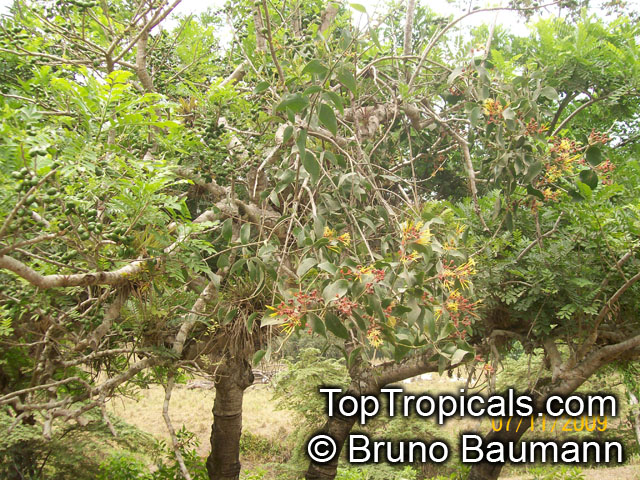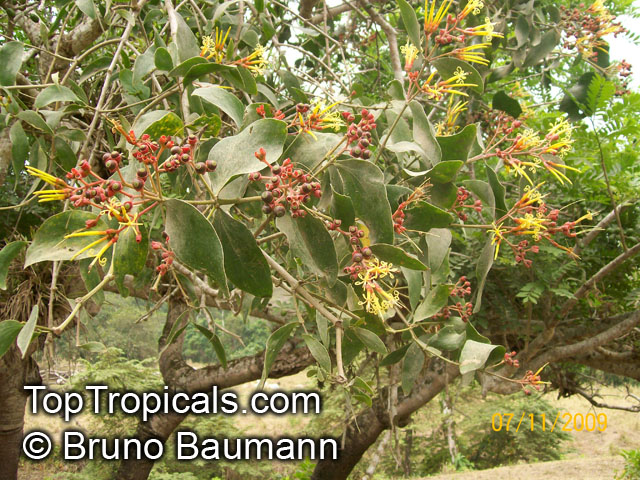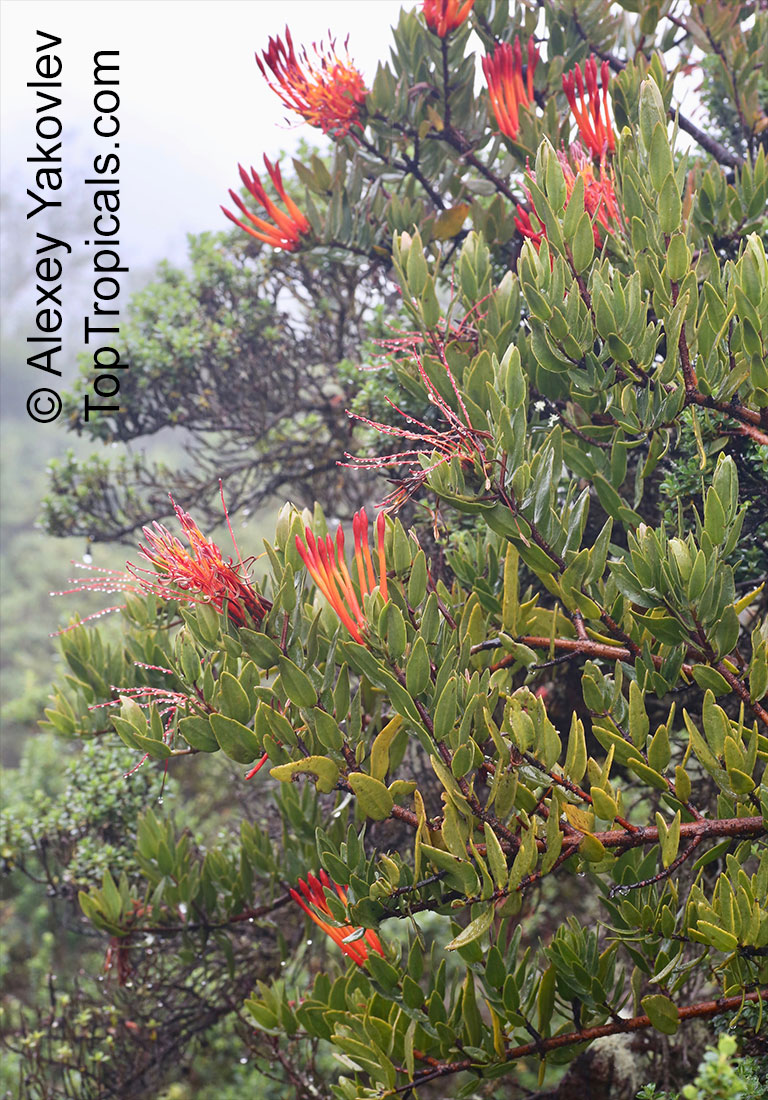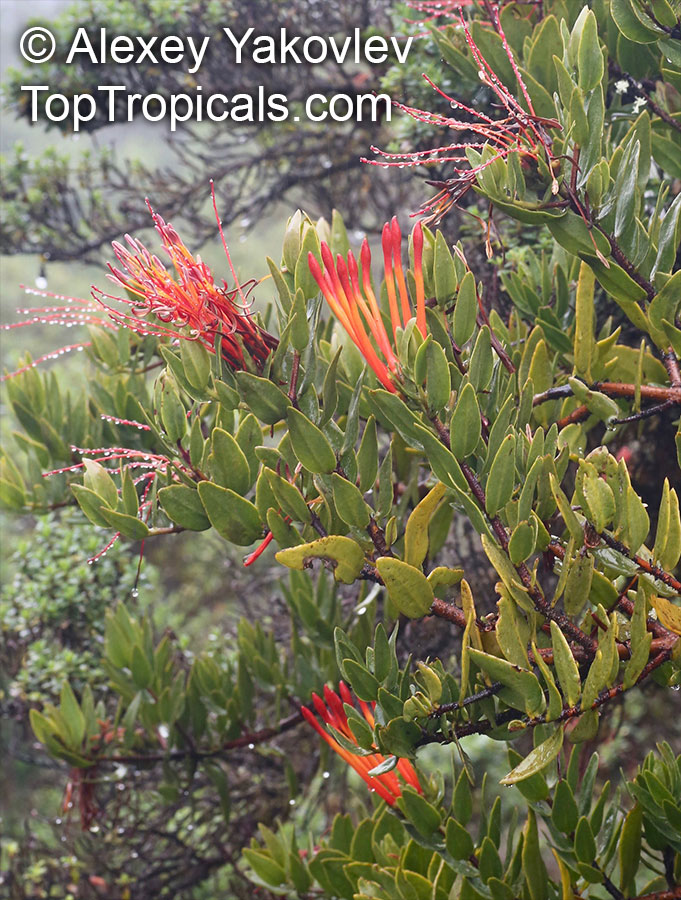Loranthaceae - Botanical Family
Top Tropicals Plant Encyclopedia
| Number of plants found: 3 |
Botanical name: Aetanthus nodosus
Common name: Aetanthus
Family: Loranthaceae
Origin: Ecuador






They are a woody perennial usually occurring as an aerial parasite, often pollinated by hummingbirds.
Botanical name: Psittacanthus sp.
Common name: Psittacanthus
Family: Loranthaceae
Origin: Central America







Psittacanthus sp. is a vine or creeper native to Central America. It is a small shrub that stands 2-5 ft high with an open branch pattern. It has oval shaped leaves and can come in shades of green, yellow, orange, and red. The plant produces vinous red, crimson, yellow, and orange flowers that are known for attracting butterflies and hummingbirds.
To grow the Psittacanthus sp. in the garden, it should be placed in a semi-shade part of the yard with minimal exposure to the sun. Epiphytes should be planted in a well-drained soil, as they are very susceptible to excessive moisture. The plant should also be kept away from strong gusts of wind.
Psittacanthus sp. can be successfully grown in USDA Zone: 9-11. In cold regions, the plant must either be grown in a pot and brought indoors for the winter, or be placed in a sheltered area. If in a pot, it should be watered on a regular basis and pruned occasionally to keep the size and shape under control. Additionally, the soil should be enriched with organic compost and fertilizer to ensure the plant continues to thrive.
Botanical name: Tristerix longebracteatus
Common name: Tristerix
Family: Loranthaceae
Origin: South America, Andes





Tristerix is a genus of mistletoe in the family Loranthaceae, native to the Andes from Colombia to Chile. They are a woody perennial usually occurring as an aerial parasite, often pollinated by hummingbirds.
Use link to repeat this search:
https://toptropicals.com/cgi-bin/garden_catalog/cat.cgi?search_op=and&keyword_op=and&language=e&family=Loranthaceae
&number=10&no_change_lang=1&user=tt&sale=1&first=0
